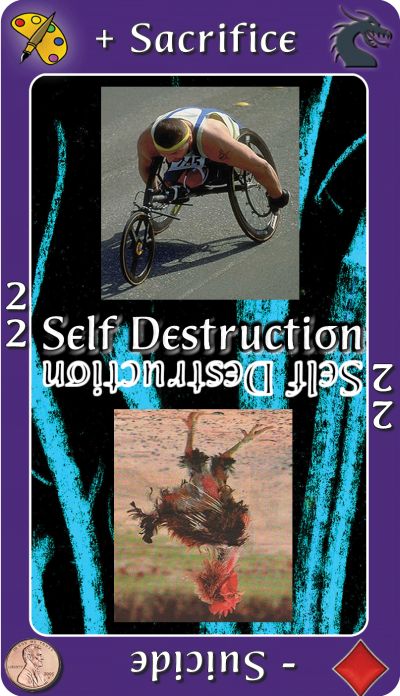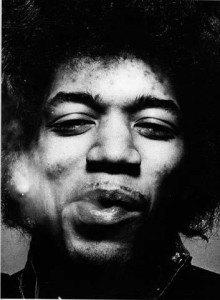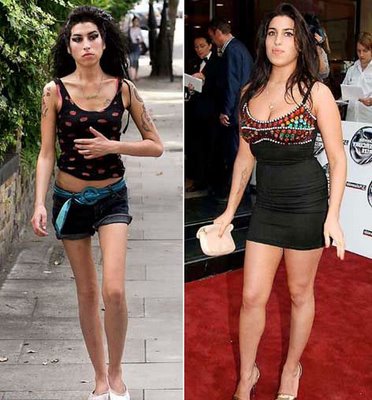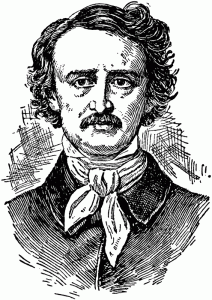22 Self-Destruction

“Bonsai!”
WWII Allied Term for Japanese Suicide Fighter Pilots
Symbols & Color
- Paint Palette: Artisan Set
- Vitruvian Man: Body Type Group
- Penny: Ordinal – Personal
- Diamond: Expression Axis
- Border Color: Violet – Artisan Set
Implications of the Upright Position or Positive Pole
For those who have given themselves, or who have been maimed somehow, and yet still strive no matter how much they lost; this is Sacrifice at its’ finest. The wheelchair racer pictured in the positive pole, shows no sign of having given up or given in, unlike like the implication for the rooster pictured beneath it. As a Chief Feature, we are reminded that Ego’s perception of things may have a skewed or even bizarre sense of valuing itself, and what it gives to meet some perception of its worth. Seldom are any of these persons consciously aware of themselves as offering ‘life and limb’ for something that has more worth than they believe they possess. Yet, the underlying notion that their own life or worthiness somehow falls short of someone or something else, is the spiritual pattern being explored here. Like its counterpart Greed (Card 23), they both have an innate sense that there is insufficiency in the world. Yet, unlike Greed which strategically overcompensates by attempting to fill itself with MORE, Self-Destruction initiates actions that seek to rid itself excess that may somehow be keeping it from some perfect state. According to Mohandas Gandhi cast is like this: “The sacrifice which causes sorrow to the doer of the sacrifice is no sacrifice. Real sacrifice lightens the mind of the doer and gives him a sense of peace and joy. The Buddha gave up the pleasures of life because they had become painful to him.”
Card messages in the Illuminated position.
+ Sacrifice
(Altruism, reparation, oblation, offering, heroism)
- Often cited as an act of true heroism is when a man in combat “takes a bullet” for someone else. Thus, sacrificing their own life shows how the high value they place on another’s. If someone has given you such a high stakes gift, don’t waste their sacrifice.
- Sacrifice for the benefit of someone else is often an act of true altruism. Give in the spirit of “what I preserve in someone else is more important to me than my direct well being.” Could more be gained if you sacrifice for someone else? Stop thinking of yourself first.
- Is someone asking you to sacrifice something for them? Make sure you know what is trying to be achieved? Don’t sell yourself out!
- If sacrifice brings you that bittersweet joy of having given something valuable to another, then it is a gift.”
- In religious terms, oblation is the sacred gift of life to another. Jesus’s death was an oblation. Whatever you sacrifice give it with as deep conviction and selflessness. Not a loss but a consecration of a principle for which only the highest toll is enough.
- If you sacrifice now, payoff will come later. Shed any hesitation.
- Make the ultimate sacrifice. Give up your agenda and get in behind someone you respect or admire. Something is at stake that is worth the price.
- One of the more inspiring statements originating in the Positive Pole of this CF, came from Fire Chief Edward F. Croker, “I have no ambition in this world but one, and that is to be a fireman. The position may, in the eyes of some, appear to be a lowly one, but we who know the work which the fireman has to do believe that his is a noble calling. Our proudest moment is to save lives. Under the impulse of such thoughts, the nobility of the occupation thrills us and stimulates us to deeds of daring, even of supreme sacrifice.” Who or what could you make the “supreme sacrifice” for?
- Sacrifice is for strengthening now and delaying gratification until later. But if your appetites make you believe you are suffering you will indulge now and gain nothing.
- To achieve a long run goal, it is sometimes necessary and prudent to make sacrifices along the way, even a few extreme ones.
- Suicide is everyone’s right, but to exercise it usually leaves everyone else feeling very wrong. Please, exercise compassion.
Quotes signifying the Overleaf in this pole
- “Nothing could be more grotesquely unjust than a code of morals, reinforced by laws, which relieves men from responsibility for irregular sexual acts, and for the same acts drives women to abortion, infanticide, prostitution, and self-destruction” Suzanne LaFollette MD, Feminist
- “I have no ambition in this world but one, and that is to be a fireman. The position may, in the eyes of some, appear to be a lowly one; but we who know the work which the fireman has to do believe that his is a noble calling. Our proudest moment is to save lives. Under the impulse of such thoughts, the nobility of the occupation thrills us and stimulates us to deeds of daring, even of supreme sacrifice.” Fire Chief Edward F. Croker
- “The sacrifice which causes sorrow to the doer of the sacrifice is no sacrifice. Real sacrifice lightens the mind of the doer and gives him a sense of peace and joy. The Buddha gave up the pleasures of life because they had become painful to him.” Mahatma Gandhi
- “That man will not merely endure: he will prevail. He is immortal, not because he alone among creatures has an inexhaustible voice, but because he has a soul, a spirit capable of compassion and sacrifice and endurance.” William Faulkner
Implications of the Reversed Position or Negative Pole
Proud and reckless often go together. This rooster shows the signs of behavior that has obviously gotten him into trouble with other chickens. Whether this is molting or he has been plucked terribly from the pecking of other birds, he looks in terrible health. Both analogies are pretty common with people in this negative pole of Suicide. Actual death may not be the affliction here, but sabotaging oneself in this context isn’t just a single act of self-destruction, but it is a lifestyle and series of choices that will bring on that demise nonetheless. This is the Artisan Chief Feature since in the act of expressing an individual persona one may perceive themselves or their creation in desperate need to display a daring act. In some cases maybe, but often they are deluded, miscalculated and ultimately harmful to themselves, but also others who are in their sphere. Think about the addict whose downfall negatively impacts their family and friends. On the Michael Cards web site is a before and after photo of singer Amy Winehouse, who succumbed to one of Self-destructions most unfortunate assassins: anorexia nervosa.
Card messages associated with Shadow position.
– Suicide
(self-critical, desperate, extreme, deplorable, mutilation, immolation, self-hatred, perversion, forfeit, forego, masochism)
- Suicide is all too prevalent when life seems worthless. It may occur in a single act or a series of small ones, resulting in implosion. Is someone daring death to eek-out some value or aliveness?
- If you see a situation where someone is about to crash and burn, the best thing to do is get a fire extinguisher.
- Are you a reckless risk taker with your health, relations or money? It is suicide to be racing toward this cliff! Don’t confuse it with a horizon.
- Is someone asking you to sacrifice something for them? Make sure you know what is trying to be achieved. Don’t sell yourself out!
- Assess the payoff you get when you persecute yourself with shame or guilt. Self-pity leans heavily to masochistic pain.
- Working yourself harder is not doing anything but cause you to self-destruct. Take a break!
- Is someone is about to crash and burn? Get a fire extinguisher or get out of the way. It is up to you whether to help. Could it be you who is a wreck? Pain is inevitable, suffering is not.
- Daredevils often push the limits so they can feel alive. What is being sought is a fleeting moment of exhilaration. Just make sure it doesn’t cost you more than its worth…or your worth.
- World Class mile runner Steve “Pre” Prefontaine, who was in Self-Destruction, had an interesting take on this CF. “A lot of people run a race to see who is fastest. I run to see who has the most guts, who can punish himself into exhausting pace, and then at the end, punish himself even more.” He
died from a speeding accident in his car, not his feet. In his case, the race did go to the swift, but it was a final. If you are revving at full gear, make sure you can navigate the turns and not just rushing to crash and burn proving yourself tougher than others. - Stop obsessing over yourself! Others need you.
- If you find something to value, and sacrifice everything trying to reach for it, then perhaps your offering will be received. Unfortunately, you might not be around to enjoy it.
- Sorry, but no one is too competent to fuck-up. Adopting the, “Na, that won’t happen to me” attitude, might as well be written on a tombstone. No one is impervious to stupidity. Yet some practice it with great misplaced self-assuredness. This person wants to dance. Best sit this one out.
Quotes signifying the Overleaf in this pole
- “Self-destruction is the effect of cowardice in the highest extreme. Daniel Defoe
- “In truth, you like the pain. You like it because you believe you deserve it, and the fact that you’re putting yourself through pain means you are doing what you, by all rights, ought to do. You’re doing something right. …Your ability to withstand pain is your claim to fame. It is ascetic, holy. It is self-control. It is masochism an masochism is pleasurable to many, but we don’t like to think about that. We don’t like to think that a person could have a twisted auto-erotic life going on, be both a top and a bottom, and experience both at once: the pleasure of beating the hell out of a body shackled at the wrists sand the pleasure of being the body and knowing we deserve each blow.” Wasted by Marya Hornbacher
- “In rock stardom there’s an absolute economic upside to self-destruction.” Courtney Love
- “A thing is not necessarily true because a man dies for it.” Oscar Wilde
Relevance in the Michael Teaching
Pain of all types is the hallmark of Self Destruction. A fear not of pain, but as having been out-of-control to stop it, of having been too insignificant to be rescued from it, or actually being blame for it, foster feelings of self hate. No one who enjoys their lives wants to careen into continuous circumstances where they might die. But for the person, or the family or the nation suffering from decimation of some sort, then the resulting strategy employs harsh and even cruel behavior upon itself to scale the wall of unworthiness it perceives itself to be. Trauma is almost always the imprint which sways the personality into the grip of Chief Feature. Trauma brings on “negative attention” and as such the pattern is set to attract it by any number of demonstrative or so-called “anti-social” behaviors, The Pariah, the one who perceives himself as being bad, or as having bad luck suffers from a self critical and intense need to prove some kind of worth, while thinking themselves worthless. Somehow, their own failings and not the failings of others, are interpreted as the cause of their suffering.
Some might wonder why Essence might allow, let alone lead a personality to Self Destruction? The alienation to the Personality provides the Essence with a means of self punishment, a means of addressing feelings of guilt or shame from a prior past life event, as to make the struggle a crucible for restitution with self. Renouncing any belief in personal worth, this person might characterize the concept of “low havingness.” Whereas, it’s counterpart Greed, tends to perceive any lack as an appetite for more and therefore as a mindset it exhibits aspects of “high havingness” as seen by the tendency for acquisition and consumption. There of course are diametrically opposed to the rejection of things (or at least lack of satisfaction in) that the Self Destruction feels.
The phrase “it is better to give than receive” is an immutable core program in the positive pole. Giving becomes a mechanism for feeling like whatever worth you have is spent in a way that achieves some atonement within. Gestures or gifts that deplete ones own ability to live or reduce one’s material well being reveal a self destructive undercurrent in everyone.
Implosion happens to the negative poles of Suicide. For “it is all about me” in this polarity: painfully, miserably, worthlessly, and completely without comprehension or availability of love coming to them from others. Isolated by a constant struggle within, pain serves as a means for regulating power and control. Thus by all counts, while suicide is considered a “selfish” act, it might as well be thought of as the Ego trying desperately to finally locate a sense of a loving self in a see of self -loathing and hopelessness.
When a person is able to confront the fallacy of total separateness, and challenge the view that they themselves are paradoxically to blame for the situation, yet powerful enough to have manifested the situation to themselves; they can reach the understanding that worth does not depend upon who notices you or deems your worthy, but that within oneself is the power to forgive and deserve something better than pain.
Famous Persons
Vincent Van Gogh, Lady Gaga, Courtney Love, Sid Vicious, John Belushi, Kurt Cobain, Jimi Hendrix, Diana, Princess of Wales, Michael Jackson, Marilyn Manson, Christina Ricci, Amy Winehouse, Lindsay Lohan, Janis Joplin, Evel Kneval, John Lennon, Girl with the Dragon Tattoo, Fiona Apple, Judy Garland, Lennie Bruce, Edgar Allan Poe
Cultural Relevance
Whenever one finds themselves or life wanting, to the degree to which it might seem hateful, or in need of strict or rigid discipline, the degree to which that practice excludes any of life’s sweetness, will cause this pathology of Self Destruction to emerge. Most specifically, the Masochist who will internalize the suffering and hold themselves to blame for any perceived flaws. Or at the other extreme the Sadist; who sliding to the negative pole of Greed, takes a sort of fiendish delight in projecting and inflicting their pain outward onto others and relishing the identification. Like the Marquis de Sade, it gives them an experience of extreme power over another person and thus inflating their own. Jeffrey Dahmer’s murderous rituals exemplify this struggle turned upon others.
The array of self destructive behaviors or tendencies vary in social rejection or acceptance. One extreme outlet of self rejection, Anorexia Nervosa destroys the very sinew of the physical body but to the one starving themselves, the control exerted over themselves seems a fitting punishment for being “fat”. Yet, society not only accepts this waif like appearance but venerates it as a standard of beauty, but media and sexual selection rewards this affliction with inflated positive attention. The extreme work-a-holic sacrificer, the one who seems to be on a mission, held up as a model of selfless virtue, sacrifices their own life in the name of some dutifully owed perfection as if they were doing penance for some shortcoming or crime unnamed. Such behavior is lauded and encouraged by those who would mercilessly consume the life force of another and perpetuate the mindset that self sacrifice were virtuous, while the scientist and psychologist proclaim the total contradiction to the evolutionary instinct for survival.
 The daredevil takes risks so in the extreme as to create a feeling of aliveness that overcomes the moribund sense of life drudgery. While these seem dangerous or extreme they garner the title “crazy “, or are granted the status as model of fearlessness. When in fact, it is a model of a numbness to pain so conditioned, that to heighten any sensation is to make the person feel alive. And from that aliveness, significant and empowered. Self Immolation or “cutting” oneself is an inflicted form of suffering that bears scars that declare “see I can take it – I am worthy after all.” To a lesser degree, tattooing is a milder expression of this belief, as is piercing. The want to be noticed. They want to be identified. A certain kind of significance arises from being held up as a symbol. Fame is the most extreme form of this isolation.
The daredevil takes risks so in the extreme as to create a feeling of aliveness that overcomes the moribund sense of life drudgery. While these seem dangerous or extreme they garner the title “crazy “, or are granted the status as model of fearlessness. When in fact, it is a model of a numbness to pain so conditioned, that to heighten any sensation is to make the person feel alive. And from that aliveness, significant and empowered. Self Immolation or “cutting” oneself is an inflicted form of suffering that bears scars that declare “see I can take it – I am worthy after all.” To a lesser degree, tattooing is a milder expression of this belief, as is piercing. The want to be noticed. They want to be identified. A certain kind of significance arises from being held up as a symbol. Fame is the most extreme form of this isolation.
Self Destruction haunts you as Chief Feature if…
- I secretly know I am unworthy and I hate that feeling and myself for having it.
- Because of some failing on my part or my body, I was somehow at fault for my childhood trauma.
- I’ll show them! I’ll do things that are so outrageous as to blast their stupid ideas and morals out the window.
- Pain, at least, reminds me that I am alive.
- If I gave my life to a noble cause or saving someone else, then my life would be worthwhile.
- Sex, drugs, and rock n’ roll could be the motto for where I find the most exhilarating feeling of life.


